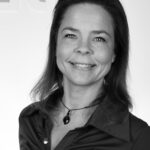The effects of insulated tub depth on the quality of iced Atlantic cod / Effect of insulated tub depth on the quality of frozen cod
The aim of the project was to investigate the quality of cod that had been gutted one day after fishing, frozen and packed in 12 different sized tanks, 4 × 250 L, 4 × 460 L and 4 × 660 L. Experimental fish were monitored at the top and bottom of each tank . The pots were stored in a temperature controlled environment at 1 ° C and measurements were made after 6, 10, 13 and 15 days after packing. To assess the quality of the cod, water loss was used in tanks after storage, processing utilization and sensory evaluation. The results showed that water loss was highest in 660 L pots and lowest in 250 L pots. There was no difference in processing efficiency. In all cases, there was less looseness in the bottom of the pot compared to the top, probably due to the different size of fish in the top and bottom. There was no difference in the results of the quality factor (QIM) evaluation between pots, but the existing sensory evaluation scales do not include the properties on which a clear difference was seen. There was a big difference between fish in the top layer and fish in the bottom layer in all cases, but ice vessels and marine fillets were more bulky on bottom fish. As a follow-up to the experiment, a new sensory evaluation scale will be designed in ongoing research on the quality of frozen and supercooled fish in different large tanks, which will address these factors, ie. let's go for ice cream and bruises in fillets.
The aim of this project was to examine the quality difference of Atlantic cod that had been iced and packed into 12 different sized food containers (tubs), 4 × 250 L, 4 × 460 L and 4 × 660 L. Each tub was split up into two groups, top-and bottom layer. Drip loss, processing yield, and sensory evaluation were used to evaluate the quality of the cod. The results showed that the greatest drip loss was in the 660 L tub, and the least in the 250 L tub. There was no difference in processing yield. Sensory evaluation showed no difference between tubs, except that the fillets from fish in the bottom layer of all containers had less gaping than fillets from the top layer of fish, most likely due to size differences of top-and bottom layer fish. No current sensory evaluation scales account for different amounts of ice marks and crushed fillets that was detected between fish in the top-and bottom layer of the tubs. The results of this project will be used in continuing research of iced and superchilled fish in different sized containers to develop a new sensory scale that will account for these qualities.







